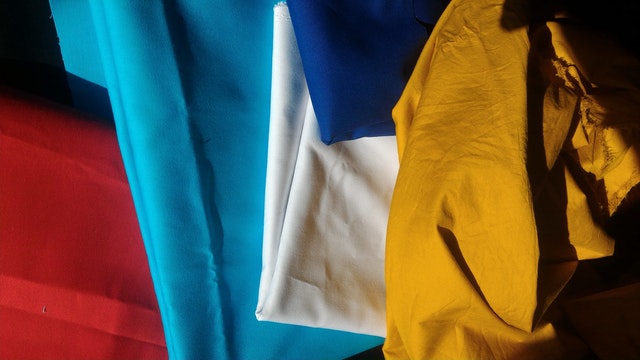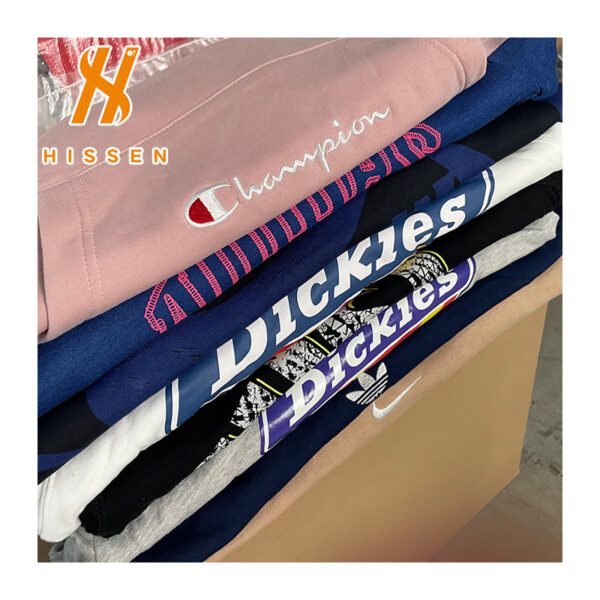Impact of the outbreak on the second-hand clothing industry
The outbreak on the second hand clothing. Used clothing recycling is an important way for the fashion industry to release pressure. The second-hand clothing trade helps prevent excess stock in the fashion industry .It from going straight into landfills while also helping to free up consumers’ wardrobes for next season’s new arrivals. But the business model is struggling like never before in the wake of the new crown epidemic, with second-hand clothing exporters in Europe and the US, as well as traders in developing countries who rely on second-hand clothing supplies, struggling.

The state of the second-hand clothing industry under the impact of the epidemic
From London to Los Angeles, the streets outside many clothing shops and second-hand clothing shops are backlogged with unsold clothes, and stock is piling up in sorting warehouses. Many textile recyclers and exporters have had to reduce their prices to move their stocks.
Traders in poorer countries such as Africa, Eastern Europe, and Latin America usually rely on second-hand clothing. Still, since the outbreak of the epidemic earlier this year, embargoes have restricted the flow of second-hand clothing, and business in overseas end markets has slowed.
With overseas buyers also no longer able to afford shipping costs. Antonio de Carvalho said his prices to overseas buyers had fallen from £570 to £400 per tonne since May, making it difficult for his company to cover the cost of collecting and storing the clothes.

second-hand clothing market shrinks!
Antonio de Carvalho’s experience reflects the difficulties faced by the industry as a whole, and it may take a long time for the battered second-hand clothing trade to recover even after the epidemic has passed.
Interviews with 16 market participants in the UK, the US, Germany, and the Netherlands by Reuters show that clothing recyclers are reducing the number of times. They pick up clothes and clear stock each week and are considering cutting staff to save cash.
At the same time, consumers stuck at home due to the epidemic are clearing out their wardrobes, and donations of clothes are on the rise. While this would be good under normal circumstances, it is putting more pressure on clothing recyclers at the moment.
Jackie King, executive director of the Secondary Materials and Recycled Textiles Association (SMART), said: “This is unlike any recession in a century. I expect companies to go out of business.”
UN trade figures show that global exports of second-hand clothing averaged more than $4 billion a year for the five years to 2019, and the exit of garment recyclers is having a profound impact on the industry.
Used clothing market in the U.S.
In the UK, exports of second-hand clothing from March to July were about half of what they were in the same period last year, official figures show. The most recent month on record – July – saw an improvement in exports as countries began to reopen and businesses seized the opportunity to move stock, but exports were still down by around 30% year-on-year.
According to US government data, second-hand clothing exports from March to July were down 45% compared to the same period last year. The US is the world’s largest exporter of used clothing, with up to a third of donated clothing ending up on the market in developing countries.

The crisis in Kenya
In 2018, Kenya imported 176,000 tonnes of second-hand clothing, the equivalent of more than 335 million pairs of jeans.
And now, at Gikomba, an open-air market in Nairobi (Kenya’s capital), one of the largest second-hand clothing markets in East Africa, business is slack, with shopkeepers standing idly by as traders struggle to yell at shoppers to try on their clothes.
Traders here have been hit twice: on the one hand, the government banned the import of second-hand textiles in March because of fears that they might carry the new coronavirus. On the other hand, demand and traffic for clothing have fallen as people themselves stay at home.
Nicholas Mutisya, a salesman selling second-hand jeans and hats, said: “Before the outbreak, I was selling at least 50 pairs of trousers a day. But now, it’s difficult to sell one pair a day.”

The Kenyan government lifted a ban on importing second-hand textiles in August after traders in Kenya and industry bodies in Europe and the US said second-hand clothes were safe and that the virus could not survive the journey to Africa.
For salesmen like Nicholas Mutisya, however, the difficulties continue. His colleague, Anthony Kang ‘ethe, says: “We used to have five workers in the company. Now there are only two of us left.”
They sell second-hand clothes shipped from the UK in a shop where they say the supply crunch has hit the industry hard. “We can’t source bundles [of clothes] directly anymore, so now we source clothes from traders we’ve worked with before.
The dark side of fashion
Since the 1990s, a massive commercial trade in second-hand clothing from Europe, the US. And other emerging markets has flourished due to the growing demand for Western fashion in Africa and Eastern Europe.
According to the Ellen MacArthur Foundation, a sustainability charity. Such strong demand has led to a rapid expansion of the fashion market. With global clothing production almost doubling in the last 15 years.
In March 2019, the United Nations Environment Programme said that the fashion industry is the world’s second-largest consumer of water. Accounting for 10 per cent of global carbon emissions – more than all international flights and shipping combined.
At the same time, excess garments create so much waste. And the waste continues to grow that they end up in landfills.
Consumers in the UK buy more clothes per person than any other country in Europe. About five times more than in the 1980s. According to a 2019 UK Parliamentary report by the Environmental Audit Committee (EAC). The report says that around 300,000 tonnes of clothing are landfilled or incinerated in the UK every year.
At the same time, excess garments create so much waste. And the waste continues to grow that they end up in landfills.

Textile waste data statistics
Consumers in the UK buy more clothes per person than any other country in Europe. And about five times more than in the 1980s. According to a 2019 UK Parliamentary report by the Environmental Audit Committee (EAC). The report says that around 300,000 tonnes of clothing are landfilled or incinerated in the UK every year.
According to the US Environmental Protection Agency (EPA). The US produces nearly 17 million tonnes of textile waste each year, the equivalent of 29 billion pairs of jeans. Two-thirds of this ends up in landfills.

Anna Smith, a Ph.D. researcher at King’s College London, is working on a circular economy system to eliminate waste. She says: “The whole problem is getting worse and worse. People are consuming more and more.”
Coping with the transformation of second-hand clothes
Many fast fashion retailers(Zara and H&M)are encouraging customers to return unwanted clothes to their shops for recycling, and H&M is offering discounts to customers who support the recycling of used clothes.
A spokeswoman for Zara’s parent company Inditex said that only a small percentage of the clothes ,collected by the company ended up back on the international market for sale. And H&M said that the clothes recycled in its shops were processed by I: CO, a German textile recycling company Soex.
Recently, Japanese fast fashion brand Uniqlo launched a recycling programme called Re. Uniqlo, which aims to recycle consumers’ second-hand unwanted branded clothing into new products.


used clothing bales suppliers uk



